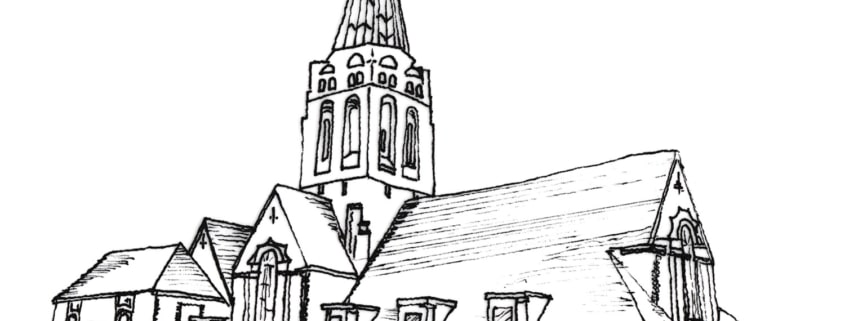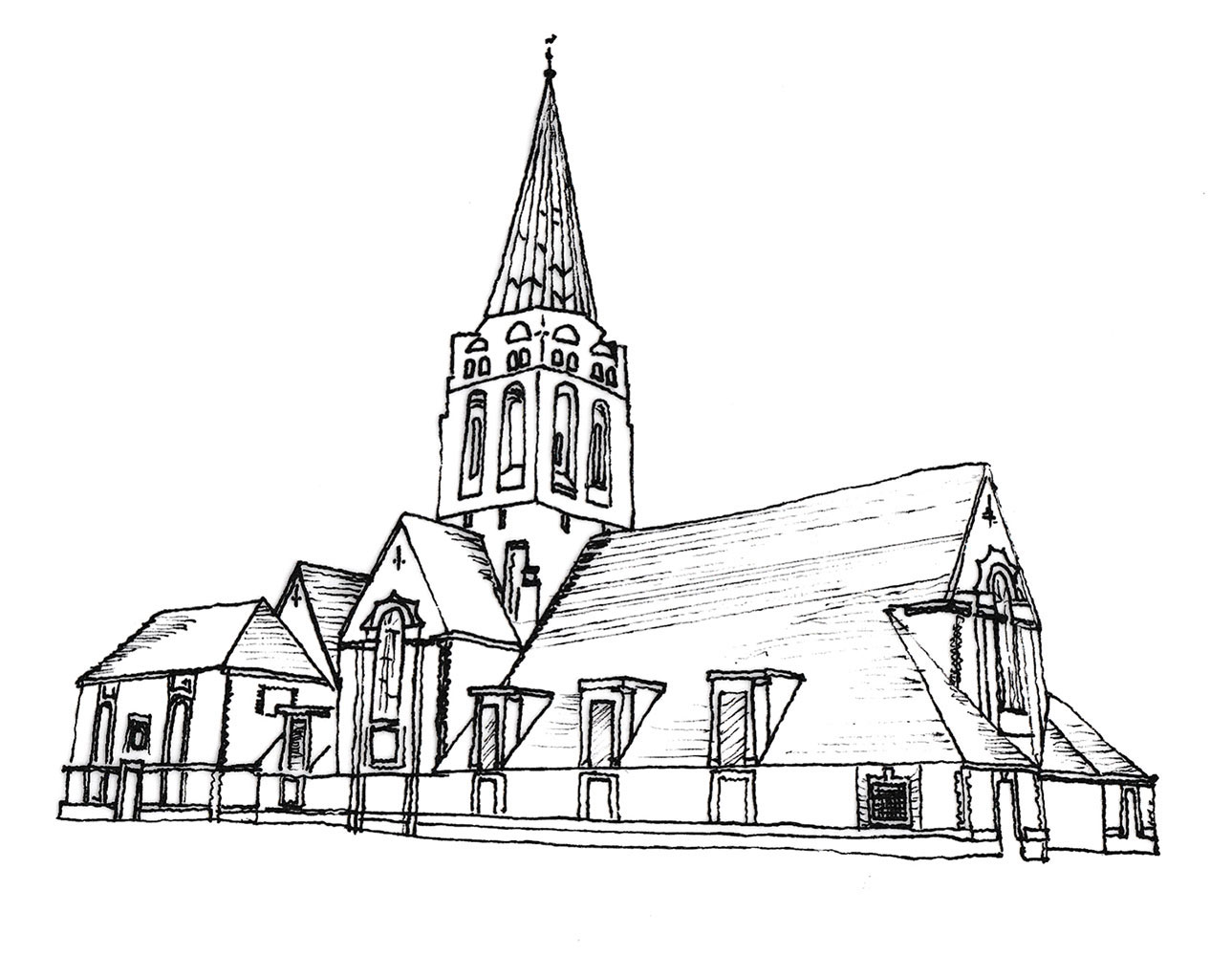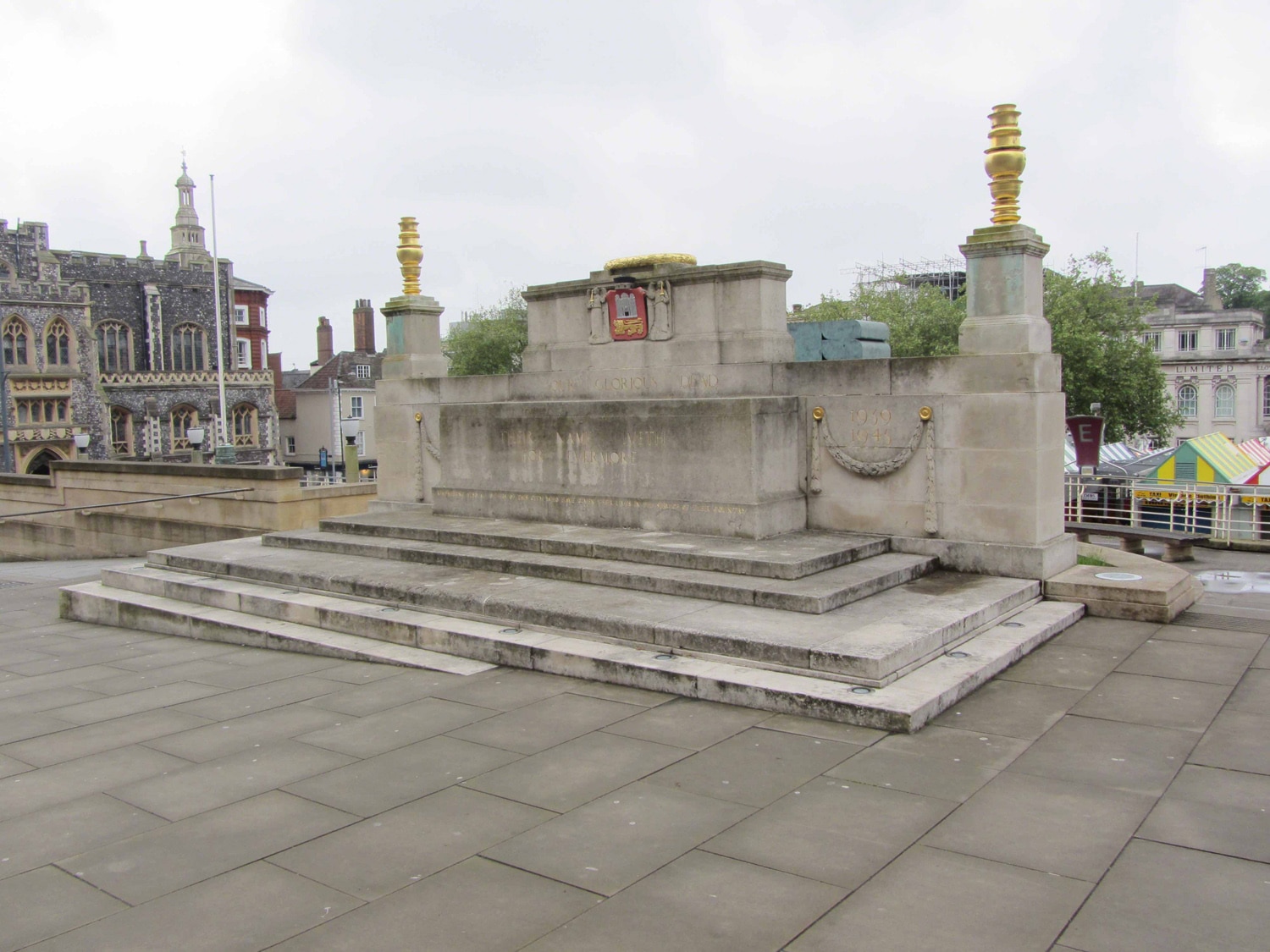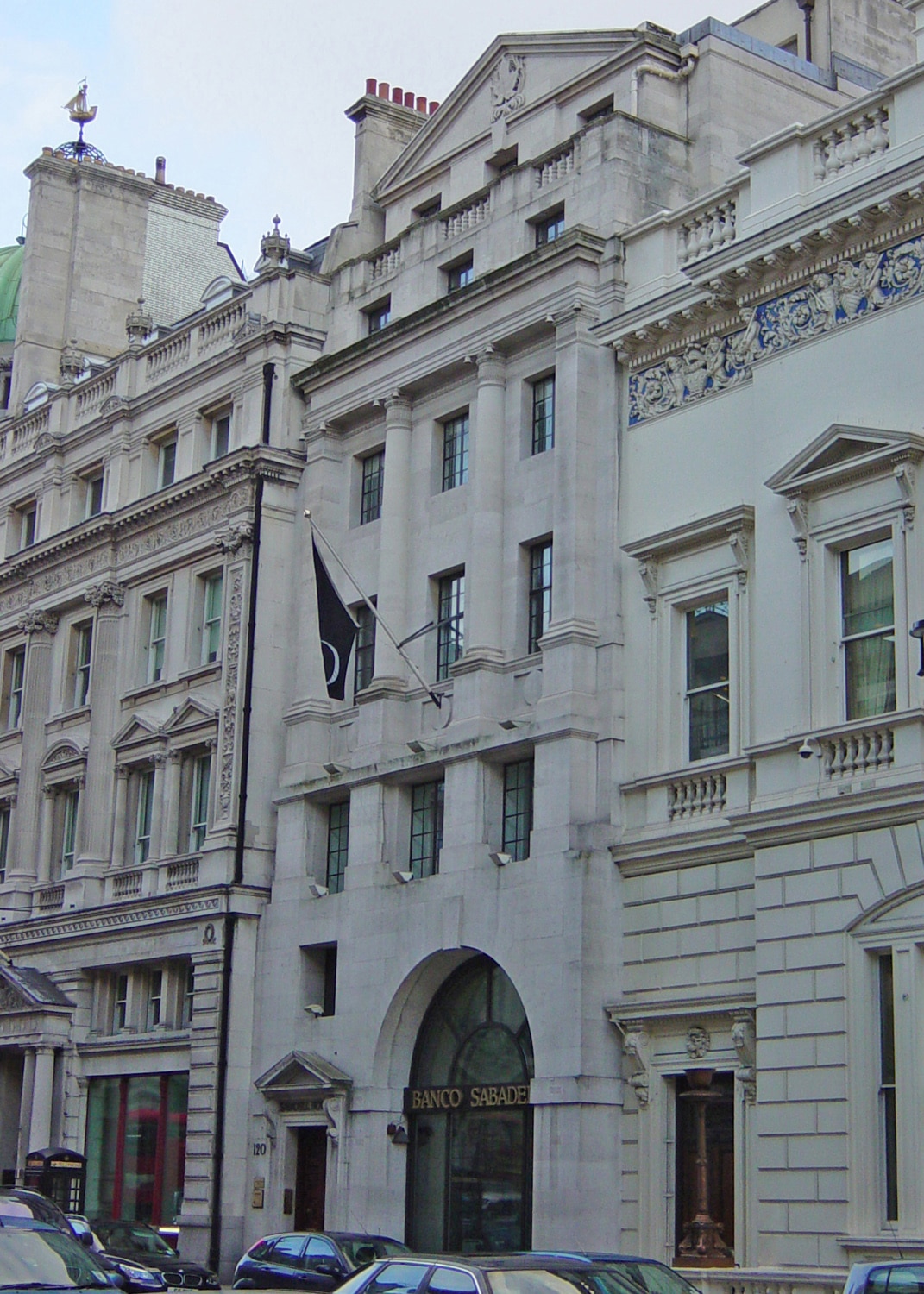
Description
Richard Downey was appointed Archbishop of Liverpool in 1928 and immediately pursued the cathedral project with vigour. A site on Brownlow Hill was eventually secured for £100,000: here a cathedral could be built which would vie with the tower of Sir Giles Gilbert Scott’s Anglican Cathedral; the great seaport of Liverpool would be able to boast two of the largest and finest modern cathedrals in the world. Dr Downey decided against both a competition and a Gothic design; in 1929 he first approached Lutyens whom he met at the Garrick Club. ‘We discussed Cathedral generally; later he wrote me asking me to go and see him at Liverpool with reference to his Cathedral. I was surprised and certainly as pleased, dare I say, as Punch. I think Dr Downey had in his mind that, in so much as the Anglican Cathedral was being built by a Roman Catholic, his architect should belong to the Church of England. I thought it to be an excellent idea. “Why not?” said I. I went to Liverpool and arrived just before lunch. I was shown into a large dull-gloomed room, and waited, feeling nervous and rather shy, till in came his Grace – a red biretta on his head and a voluminous sash around his ample waist…He held out a friendly hand. His pectoral Cross swung towards me, and the first words he said were “Will you have a cocktail?”’. Lutyens found himself greatly in sympathy with Dr Downey and the Roman Catholic clergy; earlier he had written that ‘au fond I am horribly religious, but cannot speak it and this saves my work’. He undertook the commission and began work on what was to be a cathedral twice as large as St. Paul’s, London, and in size second only to St. Peter’s in Rome: the dome, with an internal span of 148 feet, was to exceed Michelangelo’s at 137 feet and Wren’s at 112 feet.At first the project was secret and Lutyens worked on the drawings in private in the racquet court at 13 Mansfield Street. This was one of the happiest times of his life. The design was first published in 1930, but this scheme was provisional and many changes were made, particularly to the design of the dome and its external buttressing, before the final scheme was shown to the public in 1934. This design was, and is, best appreciated in the superb wooden model, 17 feet long and 11 feet high, which was made by Messrs John B. Thorp and exhibited under the central dome of the Royal Academy in 1934.
Lutyens had been to Rome in 1933 where his design had been approved by the Pope. On June 5th 1933, the foundation stone of the Cathedral was laid by Archbishop Downey in the presence of the Papal Legate. A temporary High Altar under a tall baldacchino, over eighty feet high, designed by Lutyens, was erected for the occasion and survived for a number of years. Work went ahead on the foundations and the crypt. The contractors were C. J. Doyle and Sons of Liverpool. By 1941, when work stopped owing to the War, four million bricks and 40,000 cubic feet of Penrith granite had been laid. The walls and vaults in the crypt are of dark grey and pink engineering bricks, apparently intended to be plastered; the upper parts of the Cathedral, above the granite, were to be of pinky-brown coloured Roman bricks, 1 ½ x 24 inches, with granite used for the plinths, cornices and the casing of the dome.
When work creased, and parts of the unfinished crypt were used as air-aid shelters, portions of the structure were incomplete, unstabilised and open to the weather. Work only began again in the mid-1950s. The construction of Lutyens’s design for the crypt was continued under the direction of Adrian Gilbert Scott (1882-1963), brother of the architect of the Anglican Cathedral, and carried up to a uniform level, so as to leave a vast paved floor slab above. The Crypt was formally opened in 1958. It lies at the north end of the Cathedral site and would be under the high Altar and the (liturgically) eastern parts of Lutyens’s complete building. Having descended the temporary steps on the east side of the Cathedral, the visitor first enters the Chapel of Our Lady of Dolours, which is balanced symmetrically the other side of the former organ well by another chapel. To the north of these is the long (Lower) Sacristy; to the south, the Archbishop’s Chapel, accessible through the door with a rolling stone gate.
Before he died – surrounded by his Cathedral designs – Lutyens had made all the ¼ inch scale drawings necessary to complete the building. When the design was abandoned, a set of these drawings was delivered by the contractors to the Curial Officers, their present whereabouts is unknown. While Archbishop Downey was still alive, no decision could be taken to abandon what Christopher Hussey described as ‘infinitely the largest, most original, and most perfectly integrated church ever to have been projected as a homogenous whole by a single architect’. When Dr Downey was succeeded by Cardinal Godfrey in 1953, Lutyens’s original estimate of £3 million had risen to £27 million and it was proposed to erect a smaller, cheaper cathedral ono the podium created by the Crypt. A domed cathedral, square in plan, was designed by Adrian Gilbert Scott but was soon itself abandoned. In 1959, Cardinal Godfrey’s successor, Cardinal Heenan, announced a competition for a new cathedral design. This was won by Sir Frederick Gibberd and his circular structure was completed in 1967.
In 1969 Robert Lutyens that ‘there is one work of my father’s which stands quite outside time and period, and which can be judged, therefore, as a totally isolated work of art, without social or cultural connotations, and which has been saved from prejudiced denigration by the singular purity – by the abstraction – of its non-completion. I am, of course, referring to the Cathedral. It is there, yet it is nowhere; and let no-one condemn it as an unattainable artefact. It could and should have been built. It may well have been the final affirmation of his faith in the eternal thing that so transcends mere building. It is architecture – asserted once and for ever – and the very greatest building that was never built!’ (Amery et al, 1981, pp.157-8)
In 1928 the dynamic Richard Downey was appointed archbishop and made it his aim to build ‘a cathedral in our time’. The magnificent site at the top of Mount Pleasant and Brownlow Hill, formerly occupied by the workhouse, was bought in 1930. This ensured that the building would be seen in relation to the Anglican Cathedral, rising half a mile to the s, and that the two great churches would crown the skyline. The commission was given to Edwin Lutyens – no competition was held – and his design was exhibited at the Royal Academy in 1932.
Lutyens’ vision of the cathedral is preserved in numerous working drawings, in watercolour perspectives by Cyril Farey, and above all in the gigantic wooden model now in the care of the Walker Art Gallery. Though classical in detail, it was a design of remarkable inventiveness, described by John Sum-merson as ‘perhaps…the latest and supreme attempt to embrace Rome, Byzantium, the Romanesque and the Renais-sance in one triumphal and triumphant synthesis’. The build-ing would have been colossal, 680ft long by 400ft wide (207 by 122 metres), with a dome 168ft (51 metres) in diameter and rising to 510ft (155 metres) externally, dwarfing the tower of the Anglican Cathedral and outstripping St Peter’s in Rome. The plan was longitudinal but compact: a short nave with double aisles, transepts also with double aisles, the dome as wide as the nave and inner aisles, and a short chancel with apse and circular chapter house behind. Before the nave there was to be a great narthex, the transept ends were to have angle chapels, and the apse was to be flanked by large apsed chapels and sacristies. The materials were to be buff brick with grey granite dressings. The design of interior and exterior, excluding the dome, was a development – on a stupendous scale – of the three-dimensional triumphal-arch motif Lutyens used for the Memorial to the Missing of the Somme at Thiepval.
Work began in 1933, but only the crypt was completed. It stands partly above, partly below ground, at the n end, beneath where the choir and chapter house would have been. The grey granite exterior should be understood as no more than the plinth from which the cliff-like walls of the ritual e end would have soared (the cathedral was – and is – not orientated; ritual e equals compass n, ritual w equals s, etc.). The entrance is from a sunken court on the ritual s side. Pevsner was shocked by what he called the ‘exasperating whimsy’ of Lutyens’ unconventional detailing here: the tapering pillars that flank the doors, partly free-standing and partly absorbed, and the transom of the great semicircular window, seemingly forced into a downward curve by the keystone above. But such details are surely personal and expressive distortions of the classical language, in the tradition of Michelangelo or Giulio Romano.
The doors lead straight into the Chapel of St Nicholas, with nave and aisles terminating in three apses. The piers are so massive that the space seems hollowed out of the earth rather than built. Granite dressings are used, but walls and vaults are of brick (left bare, not plastered as Lutyens intended). An identical space (now the Concert Room) occupies the corresponding area on the ritual n side, and on the central axis, between the chapel apses, are two great circular chambers, directly below what would have been chapter house and choir. One was intended to contain the organ, the sound of which would have risen through a grille; the other was to be the electrical switch room. On each side of the chapels, two immense vaulted halls run the full width of the building. The one on the ritual e side, originally intended as the lower sacristy, is lit by five semicircular windows and has stairs at either end. These are cantilevered around a circular well, and each flight starts with convex and ends with concave steps. The hall on the opposite side has groups of columns at each end, creating shadowy three-naved fragments. Opening off its ritual w side is the Chapel of the Relics – the burial place of the archbishops – directly under what would have been Lutyens’ High Altar. The remarkable gate is a circular slab of Travertine that rolls open and shut, fretted with carving in the form of a cross. Inside, the chapel is faced with marble and Travertine and has pairs of Doric columns in recesses. Deep semicircular arches above these columns enclose sculpted sarcophagi. It is a solemnly impressive interior.
Work on the crypt ceased during the Second World War; Lutyens died in 1944, Archbishop Downey in 1953. By now it was clear that Lutyens’ scheme was impossibly large and costly. A scaled-down version by Adrian Gilbert Scott, published in 1955, was not pursued. Finally, in 1959 a competition was held for an entirely new design. (Pollard & Pevsner, 2006,pp.353-6) At the top of Brownlow Hill in Liverpool sits Sir Frederick Gibberd’s Metropolitan Cathedral, which is located above the crypt of an earlier design by Sir Edwin Lutyens. Although Gibberd’s scheme represents a significant achievement in modern architecture for the city of Liverpool, Lutyens’ crypt offers a glimpse into the design of what would have been one of the largest cathedrals in the world if built beyond its base.
After a stalled attempt to construct a catholic cathedral in Liverpool in the mid nineteenth century, the idea was raised again in the 1920s. The new Archbishop, Dr Richard Downey, was a key figure in progressing efforts to build a cathedral. He was introduced to Lutyens at the Garrick Club in 1929, in which a rough design sketch was drawn and Lutyens was consequently confirmed as the architect. He began working on the Neo-Classical design immediately, vast in scale and second only to St Peter’s Basilica in Rome on a technicality. The scheme, formed of a series of interlocking arches topped with a dome, is of particular interest in his body of work as it overlaps the periods in which he was designing and constructing projects in New Delhi as well as war memorials such as Thiepval in France. Elements of the latter are particularly visible in the cathedral design, for example the sequence of arches and banding of stone and brickwork. Although Lutyens worked on other projects after it began, the cathedral became his primary focus for the rest of his life.
Construction started on the crypt in 1933, and a physical model of the scheme was displayed at the Royal Academy in 1934, now exhibited at the Museum of Liverpool. Work was abandoned in 1941 as wartime restrictions resulted in a lack of labour and materials. Lutyens died on New Year’s Day in 1944 surrounded by drawings of the cathedral and Adrian Gilbert Scott, brother of Giles Gilbert Scott who was completing Liverpool’s Anglican Cathedral at the opposite end of Hope Street, was made continuator. Post-war restrictions halted building work further, and in 1953 Archbishop Downey also died. After the death of the two men most responsible for progressing efforts to complete the design, the decision was taken to finish the crypt of the Lutyens scheme only. In 1959 an architectural competition was announced for a new design incorporating the crypt, which was won by Gibberd and subsequently built on the site.
In his 1981 essay Arches of Triumph: the design for Liverpool Cathedral, Sir John Summerson stated that ‘the question whether a building can assume a place of authority in the world of architecture without actually being built is a curious one; but the answer is not in doubt… It will survive as an architectural creation of the highest order.’
(Contributor: Dr Nick Webb, Liverpool School of Architecture.)
Bibliography
Amery, C., Richardson, M. and Stamp, G., (1981) Lutyens, the Work of the English Architect Sir Edwin Lutyens (1869-1944): Hayward Gallery London, 18 November 1981 – 31 January 1982. London: Arts Council of Great Britain.Pollard R & Pevsner N (2006) Lancashire: Liverpool and the South West. The Buildings of England. New Haven: Yale University Press.
Also Cited In
Gradidge, R. (1982) Edwin Lutyens: Architect Laureate. London: Allen & Unwin.Butler, A., 1950. The architecture of Sir Edwin Lutyens: the Lutyens memorial series. Vol III: Town and Public Buildings: Memorials: The Metropolitan Cathedral, Liverpool, Country Life: London and Scibners: New York.
Listing Grade
II*Listing Reference
1070607Client



